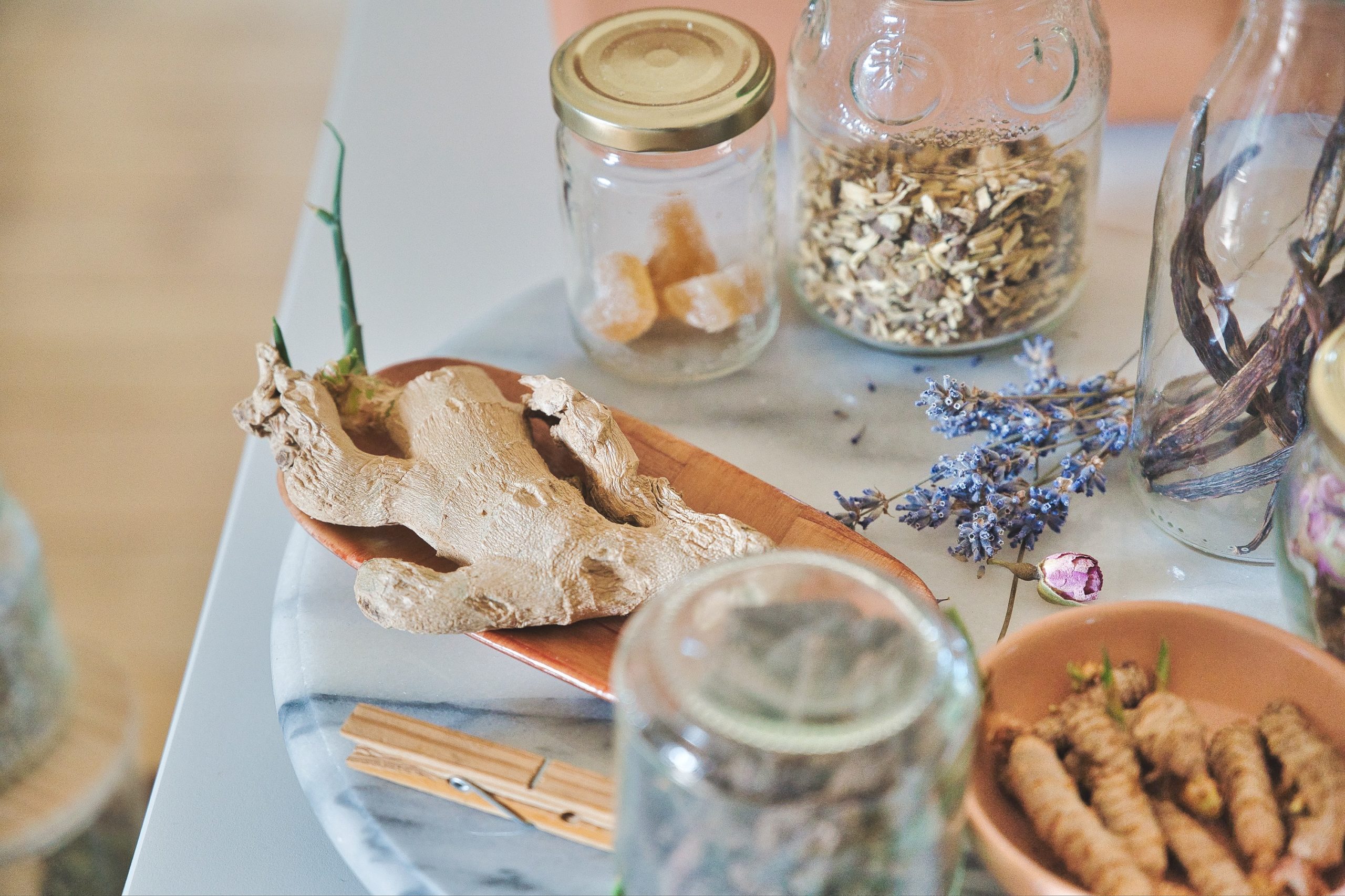
Author: Donna Koczaja, MS, RH(AHG) is a Registered Herbalist and a graduate of MUIH’s Herbal Medicine program. She is the owner of Green Haven Living, LLC, where she helps individuals achieve their wellness goals using herbs. She also occasionally helps out at the MUIH Herbal Dispensary – a healing place of its own. Learn more about Donna, what she does, and why she does it at www.greenhavenherbalist.com.
Fall is underway!
The days and nights are cooler, the air is crisp, and nature is preparing to hunker down for the winter. When I think of “herbs for fall”, I think of roots and seeds, and warm, spicy herbs for the chilly nights.
In the cycle of the seasons, it is natural to correlate roots (and seeds) with autumn – the natural decline of the growing season. This is because the herbaceous parts of plants begin to die down and start to put their energy into fortifying the roots to overwinter and re-emerge in spring. Traditionally, fall is the peak time to harvest root herbs for this reason – their nutrient and medicinal content is maximized at this time.
Perhaps not coincidentally, the root herbs I tend to associate with fall are also warming, spicy, and hearty – just the ticket for those cooler, darker days. To that end, here are 5 herbs that I would consider essential partners as we head into fall:
Ginger root (Zingziber officinalis)
No list of warming, fall root herbs would be complete without ginger. In fact, renowned British herbalist, Simon Mills, often says that if he had to pick only two herbs to use, ginger would be one of them! (Hint: His other go-to herb is at the end of my list!).
Ginger is perhaps best known for its anti-nausea effects. Remember when your Mom gave you ginger ale for an upset stomach? Mild, gentle, and zingy, a warm, ginger tea is quite soothing. Pregnant women sometimes use it for morning sickness, and cancer patients can also benefit.
Not a one-trick pony, ginger also boasts anti-microbial and anti-inflammatory properties, and is a great febrifuge (induces sweat to help break a fever). And it tastes great!
Burdock root (Arctium lappa)
Continuing with the root theme, burdock is a hearty, earthy herb primarily used to enhance digestion. In particular, burdock root promotes the production and secretion of bile from the liver and gall bladder. Bile is necessary for fat digestion, so it would be useful to have burdock root handy for the Thanksgiving meal and other upcoming holiday festivities. As a bonus, burdock is also helpful in maintaining bowel regularity, and even assisting when bowels are, well, ‘not so regular’.
Dandelion root (Taraxacum officinalis)
I consider dandelion root a sister herb to burdock, because its medicinal properties are similar. Both the leaves as well as the root are used medicinally (and sometimes even the flower – not just for dandelion wine!), but each plant part has slightly different properties. Sticking to my ‘roots’, though, like burdock, dandelion root also increases bile production and secretion. It’s slightly bitter, and as a general rule bitter herbs enhance digestion by stimulating digestive enzymes. Think about when you taste something very bitter – does your mouth water? That’s actually very good, because saliva breaks down carbohydrates right at the beginning of the digestive tract.
Cardamom seed (Elettaria cardamomum)
The therapeutic part of cardamom is actually the small seeds enclosed in a larger seed pod. It’s classified as an herbal aromatic due to its spicy, warm, and even tingly taste. Yet it’s quite different from ginger (but pairs well!). Cardamom is a common ingredient in herbal chai teas, giving chai that distinctive, spicy flavor. Medicinally, cardamom is considered a ‘carminative’, which is a fancy word meaning ‘relieves gas and bloating’. It helps to relieve spasms in the gut, which in turn breaks up painful gas bubbles. Like burdock, a must-have for your Thanksgiving dinner!
Cinnamon inner bark (Cinnamomum cassia, C. verum)
You guessed it – cinnamon is Simon Mills’ other go-to herb. Not a root or a seed, but an important fall herb nonetheless. Like ginger, it’s spicy and warm, but it’s more sweet. In addition to flavoring your muffins and other delectables, it has a wealth of health benefits. I use cinnamon as a very mild circulatory and/or digestive stimulant, and its mild astringency means it is also indicated for loose bowels. I also use it for my clients who need a little help with regulating their blood sugar. And, of course, like most herbs and spices, cinnamon is also anti-inflammatory. I love the taste of all things cinnamon, and I suggest using it liberally in cooking. In fact, cinnamon is also a natural preservative, so adding it to baked goods can prolong their shelf life as well as make them extra tasty!
Why I love these herbs for Fall
These are just 5 of my favorite herbs for fall. All are very safe for regular, daily use, and are very easy to find. Many health food stores have bulk herbs at reasonable prices – buy some and try blending your own teas to taste. Root, seed, and bark herbs are best simmered in a covered pot over direct heat for about 20 minutes before straining and enjoying.
Powders are great to sprinkle on your oatmeal, yogurt, or applesauce. Just keep in mind that burdock and dandelion roots are slightly bitter. But it’s well worth the taste – the bitter is actually what makes these herbs so effective!
Finally, ginger, cinnamon, and cardamom are also wonderful additions to fall-favorite baked goods such as pumpkin breads and muffins. Add a therapeutic punch to your autumn traditions!